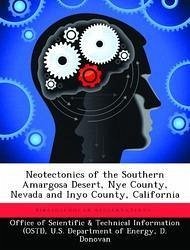Nicht lieferbar

History of Peacekeeping in the Sinai Desert, 1956-2002
Versandkostenfrei!
Nicht lieferbar
The Multinational Force and Observers (MFO) celebrated their twentieth anniversary in the Sinai Desert in 2002. During the past twenty years there has hardly been a shot fired in anger between Egypt and Israel, the antagonists the MFO is charged with keeping at peace. The silence along the international border in the Sinai has prompted a serious review of the MFO's continued relevance by the US Department of Defense. The MFO position, strongly supported by the governments of Israel and Egypt, is that the MFO is highly relevant and still necessary in the Sinai. This thesis seeks answers to this...
The Multinational Force and Observers (MFO) celebrated their twentieth anniversary in the Sinai Desert in 2002. During the past twenty years there has hardly been a shot fired in anger between Egypt and Israel, the antagonists the MFO is charged with keeping at peace. The silence along the international border in the Sinai has prompted a serious review of the MFO's continued relevance by the US Department of Defense. The MFO position, strongly supported by the governments of Israel and Egypt, is that the MFO is highly relevant and still necessary in the Sinai. This thesis seeks answers to this contradiction by reviewing the history of peacekeeping in the Sinai Desert. The three peacekeeping forces and the military, political, and diplomatic action that surrounds them is a reminder that peacekeepers do not make peace, nations make peace. The peacekeeping forces that have served in the Sinai have been highly effective. However, the root problem that brought them there in 1956 remains unresolved. Until the resolution of the Palestinian problem in Gaza and the West Bank, peacekeepers will be a necessity in the Sinai Desert. This work has been selected by scholars as being culturally important, and is part of the knowledge base of civilization as we know it. This work was reproduced from the original artifact, and remains as true to the original work as possible. Therefore, you will see the original copyright references, library stamps (as most of these works have been housed in our most important libraries around the world), and other notations in the work. This work is in the public domain in the United States of America, and possibly other nations. Within the United States, you may freely copy and distribute this work, as no entity (individual or corporate) has a copyright on the body of the work. As a reproduction of a historical artifact, this work may contain missing or blurred pages, poor pictures, errant marks, etc. Scholars believe, and we concur, that this work is important enough to be preserved, reproduced, and made generally available to the public. We appreciate your support of the preservation process, and thank you for being an important part of keeping this knowledge alive and relevant.












